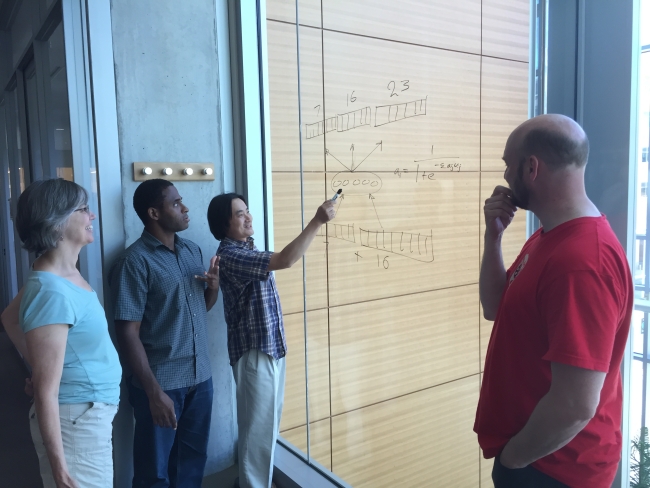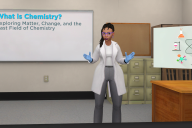You have /5 articles left.
Sign up for a free account or log in.

Members of the research team discussing machine teaching
Courtesy of Jerry Zhu
Imagine if schoolteachers and college professors were immediately able to identify how each of their students learns, what learning style works best for each child and what new topics he or she is struggling with.
Research faculty members at the University of Wisconsin at Madison are hoping that this can be the future of education. Their research uses a combination of psychology and computer science to determine how best to optimize teaching for individual students. This means teachers and professors will be able to immediately know what subjects students are struggling with and be able to address those needs, instead of teaching an entire class of students with ranging difficulties.
Jerry Zhu, an associate professor of computer science at Wisconsin, has dubbed this technique “machine teaching,” a flip of machine learning, or when computers recognize patterns during data analysis in computer science or statistics. Instead of the computers recognizing a pattern, an equation that represents a student’s mind would be punched into the computer, which in turn would tell the teacher the student’s specific learning style and needs in the classroom.
But Zhu said that those equations have yet to be developed, and it will be years before they will be created, an effort he says researchers in both computer science and psychology are working toward achieving.
This research could help bring education to a more individualized level, Zhu said, helping teachers to know which students are struggling with what and what strategy would be the best to use when teaching a certain student or subject.
“What really happens is we sit on top of [that equation], so anybody willing to come forward and say, ‘hey, here’s how we think the human mind is computing,’ we’re going to take that with an educational goal and the actual machine teaching, trying to come up with the best lesson,” Zhu said.
Zhu said this will not minimize the teacher or faculty member role, but would help to optimize the teacher’s time, so he or she could spend the least amount of time necessary on a subject before every student fully understood it.
For now, Zhu and his research team -- composed of three other computer science professors, an engineering professor, two psychology professors and two educational psychology professors -- are focusing on the theoretical side of the research, examining how to create an optimal lesson for a student if the correct equation is used.
He said the team is using cognitive models created by psychologists that determine how children add up simple numbers to test machine teaching, but added that the research is still in the very early levels of completion. The project is currently being funded through a two-year grant from the Graduate School at Wisconsin, but team members are also pursuing funding from the National Science Foundation.
Martina Rau, an assistant professor of educational psychology working on the project, said she was drawn to the project because she’s interested in creating educational technology for the classroom. Her research focuses on bringing together the two different ways students learn -- conceptually, which has to do with mobility and reasoning of what an object is, and perceptually, which has to do with recognizing an object and further representations of it.
Rau said machine teaching “solves that problem” because the teacher will not just see the physical representations of what a student is struggling with, but also what is going on in the mind of the student and what roadblocks the student could be facing there.
Rau, who comes from a family of teachers, said her relatives are often horrified when she says she works on developing educational technology, because they’re afraid her work will help to replace teachers in the future. But she said new technology won’t ever take the place of teachers, but rather help them do their jobs better and more efficiently.
“The teacher gets information on how the students are doing -- this can be flagging down a particular individual student who is struggling at a problem, or perhaps a teacher was like, ‘hey, the five of you, get yourselves over here so I can explain this thing to you again.’ Or the teacher can use that information to find a group of students who might want to work collaboratively,” she said. “All of these things we’re still doing research on how best to guide the teacher in doing this.”
Rau said machine teaching could be also be used in higher education, particularly in small group discussions or labs, but it is harder to convince faculty in higher education to use these new resources than it is for K-12 teachers and administrators.
She noted that this project is “truly interdisciplinary,” because none of members would be able to complete the research on their own, a sentiment echoed by Zhu, the computer scientist.
“I also hope that my colleagues in computer science would suddenly collaborate a lot more with researchers working with real human problems, including education, but not limited to that,” Zhu said.







